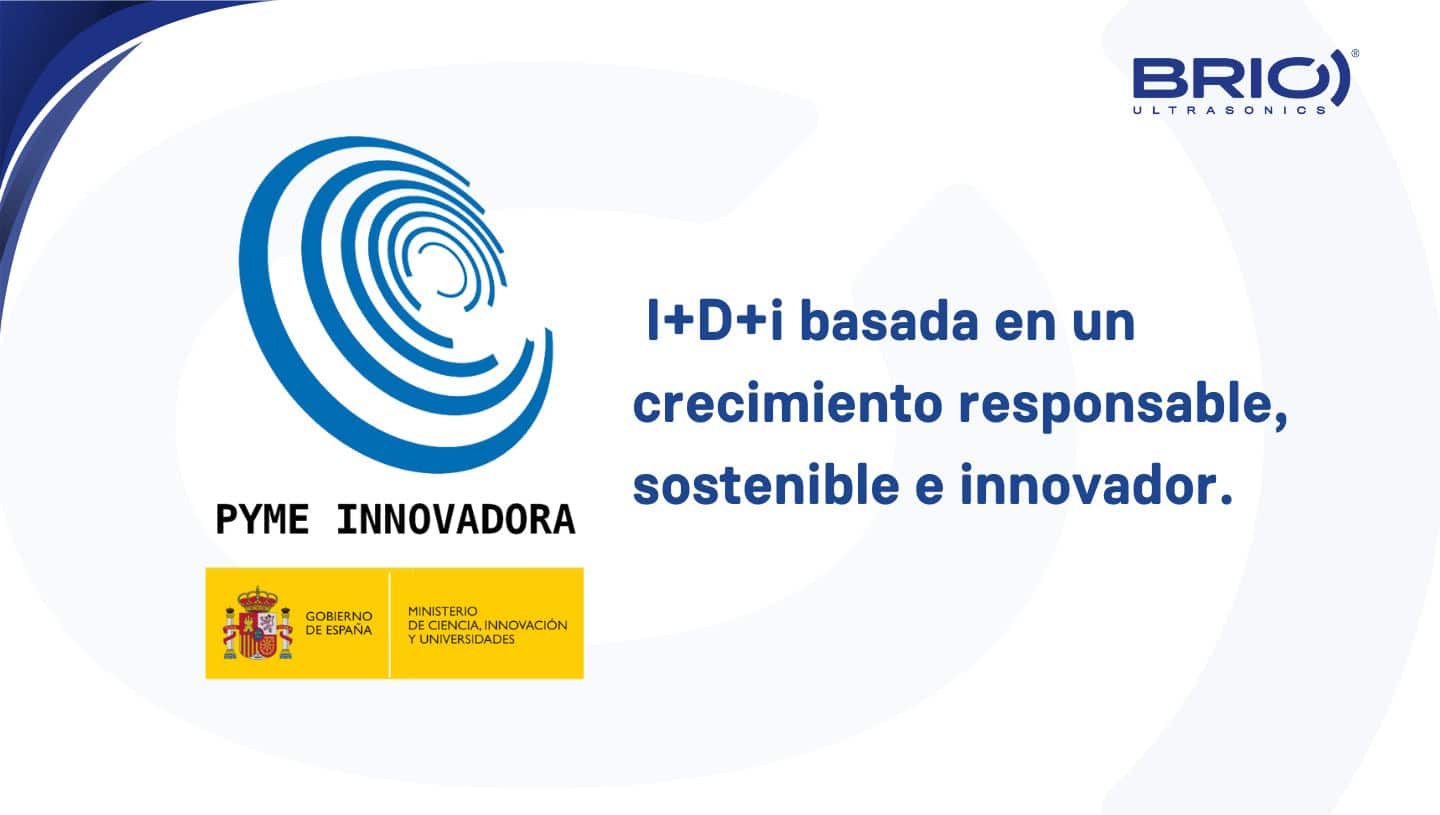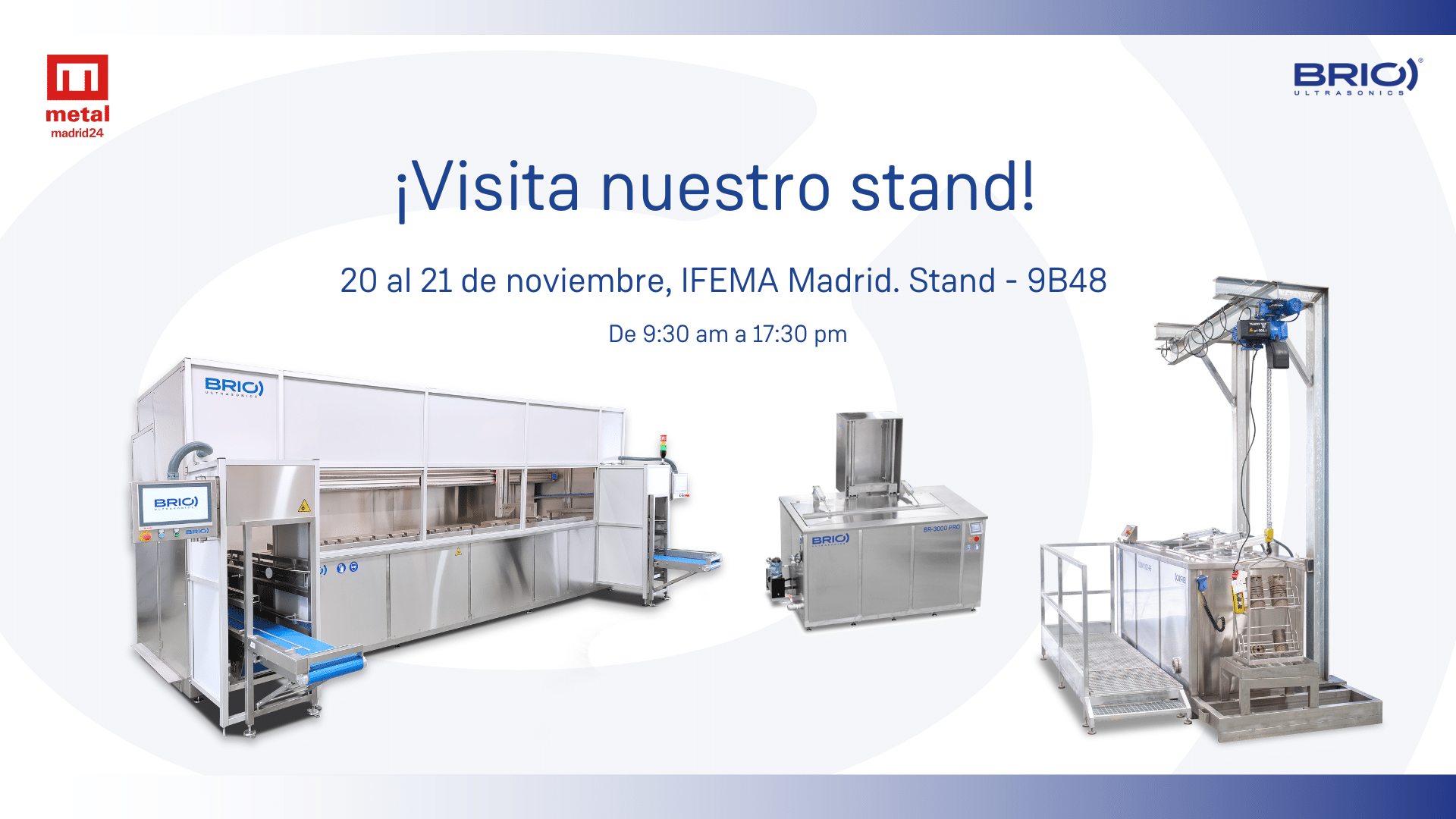The BRIO Ultrasonics Difference: A New Level of Energy Efficiency, Cleaning Power and Durability in Ultrasonic Cleaning
In the parts cleaning industry, the appearance and external finish of the machines are very relevant aspects for the client, but… What is the most important thing?
The most important thing is the heart of the machine. Just like a car engine, ultrasonic cleaning machines have ultrasonic emitters made of transducers or transducers directly attached to the tanks. These emitters/transducers, powered by a generator, produce the ultrasonic cleaning effect together with the appropriate cleaning liquid, temperature and time. BRIO Ultrasonics, Choosing the right technology, especially for the heart of the machine, will determine the energy consumption, cleaning times, cleaning quality and durability of the main components. It is very important to be sure of what is inside the machine, to compare technologies, perform cleaning tests, etc.
BRIO Ultrasonics is a Spanish company dedicated to the design and manufacture of ultrasonic cleaning machines and custom solutions for a wide variety of industrial applications. With over 30 years of experience, we have developed and evolved an exclusive ultrasonic cleaning technology that achieves a new level of energy efficiency, high cleaning performance and superior durability. Thanks to this, we provide all our customers with significant savings in washing times, energy consumption and maintenance.
How do we maximize ultrasonic cleaning performance while minimizing energy consumption?
The key lies in the design of our ultrasonic emitters, which we manufacture using a specific process of hot-bonding the transducers to the emitting plate.
How does BRIO Ultrasonics’ hot bonding process work?
The transducers are attached to the emitter plate by means of a thin elastic film made of special resins used mainly in the aerospace industry. The use of these resins maximizes the surface area for transmitting ultrasonic vibrations to the bath, making the most of the power of the transducers. In addition, they also provide maximum durability to the ultrasonic emitter. However, to achieve these effects, a specific combination of temperature, pressure and time is required in the adhesion process.
Our R&D department has come a long way in understanding the properties of these resins and learning how to apply them to ultrasonic cleaning. After years of research, they have determined the most suitable specific parameters to achieve the best results in terms of ultrasonic vibration transmission to the bath and mechanical resistance.
Why is it so important to maximize the vibration transmission surface?
In a standard cold bonding process, the vibration transmission surface is limited to the contact area of the transducers. In the case of our hot bonding process, the vibration transmission surface is the entire BRIO emitter plate (the entire surface with the aerospace elastic sheet) and not just the surface of the transducers. This results in a greater and more homogeneous impact of the ultrasonic implosions on the entire geometry of the parts and not just in specific areas.
We managed to multiply the transmission surface by three and achieve a more homogeneous and effective cleaning effect inside the bathroom. In this way we maximize the cleaning power while achieving faster cleaning cycles and optimizing energy consumption.
COMPARATIVA DE SUPERFICIE DE TRANSMISIÓN DE ENERGÍA ULTRASÓNICA
Emisores de 12 transductores con diferentes procesos de pegado.
Why is it so important to have high mechanical resistance?
The fixation of the transducer assembly to the emitter plate is such that we achieve a much greater mechanical resistance than standard ultrasonic cleaning technologies. At BRIO Ultrasonics this is especially important when it comes to removing heavy dirt, carbon deposits and other strongly adhered contamination. In these cases, transducers with an ultrasonic frequency of 28 kHz are recommended.
The 28kHz frequency produces more intense microimplosions in the fluid due to the production of larger bubbles (longer wave period). As a result, a more powerful cleaning effect is produced than in the case of higher frequencies such as 40 or 80kHz. High mechanical strength is essential if high-power transducers (28kHz) are to be used effectively without compromising their integrity after a period of use.
Furthermore, the best performance of ultrasound is achieved when the fluid and the emitter are in a temperature range between 60 and 85 degrees Celsius. In this temperature range, the mechanical strength provided by our hot bonding system is around 4000 N/cm2. In contrast, cold bonding systems provide about 500 N/cm2, which is not sufficient for long-lasting work at 28kHz.
Other improvements allow us to optimize the efficiency and lifespan of transducers and transmitters. BRIO Ultrasonics.
First, we wire the transducers in parallel, meaning that each transducer is wired independently. This is important for two reasons:
1. We can control the impedance that each transducer draws from the BRIO generator, resulting in better transmission of ultrasonic energy. If transducers are wired in series (same cable from one to another, in series), the change in impedance can result in a loss of efficiency and a higher risk of failure.
2. In the event of an electrical incident in any transducer, since they are wired in parallel, the rest continue to operate without problem. If the wiring is in series, all power is lost.
Secondly, our emitters have two anchoring points sealed with Teflon. The possibility of leakage is reduced to a few millimetres and in the event of a leak, water cannot enter the emitter. In addition, the two-point connection also allows the necessary elasticity so that the emitters can expand and contract safely with temperature fluctuations.
On the other hand, standard technologies such as multi-screw emitters have a large leakage surface (many attachment points) and are more affected by temperature changes. Another common mounting system consists of direct cold gluing of the transducers to the cleaning tank. In this case, changes in the shape of the tank due to temperature changes can cause the transducers to come loose and break.
In summary, BRIO Ultrasonics’ hot bonding process has a major impact on the overall performance of the ultrasonic cleaning system. It enables more powerful and homogeneous cleaning in less time, optimised energy consumption and a longer component life.
Despite the high demand for our technology from other manufacturers, we maintain our exclusivity policy and it can only be found in our ultrasonic cleaning machines. You can access our machines and solutions page to see more information about our machine series. You can also discover the solutions we provide to all sectors on our sectors and applications page.
Please do not hesitate to contact BRIO Ultrasonics to resolve any questions and share with us your parts cleaning and/or surface treatment needs. We will be happy to advise you and provide you with the best ultrasonic cleaning solution for your case.
We also invite you to visit us and see our machines and solutions first-hand at the Advanced Manufacturing Metalmadrid 2021 fair. The fair will take place on November 17 and 18 at the IFEMA venue in Madrid with all the necessary security measures. BRIO Ultrasonics, you can download your free ticket through the following link.
We look forward to seeing you at booth 7A19! BRIO Ultrasonics!
METALMADRID 2021 17 - 18 November 2021
HALL 7, STAND A19









